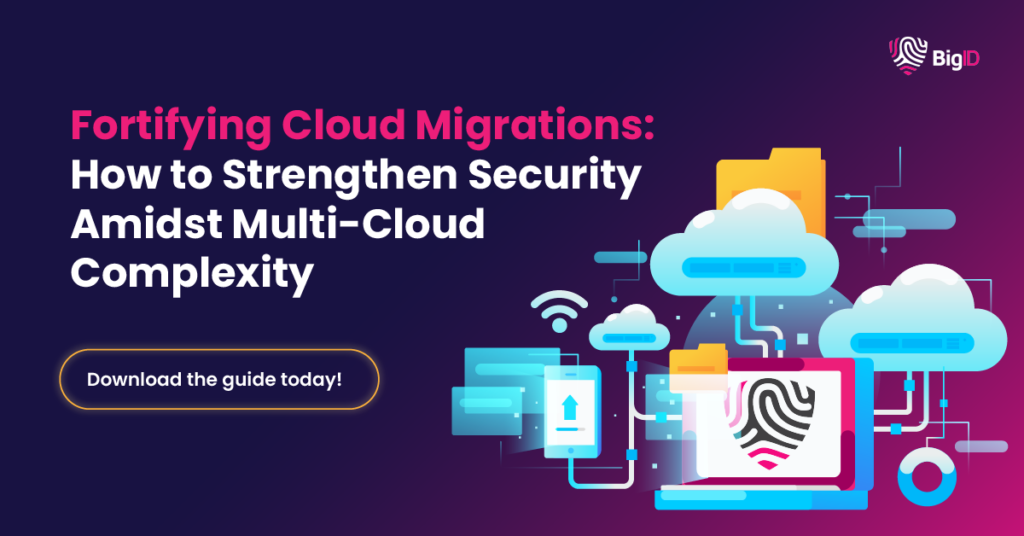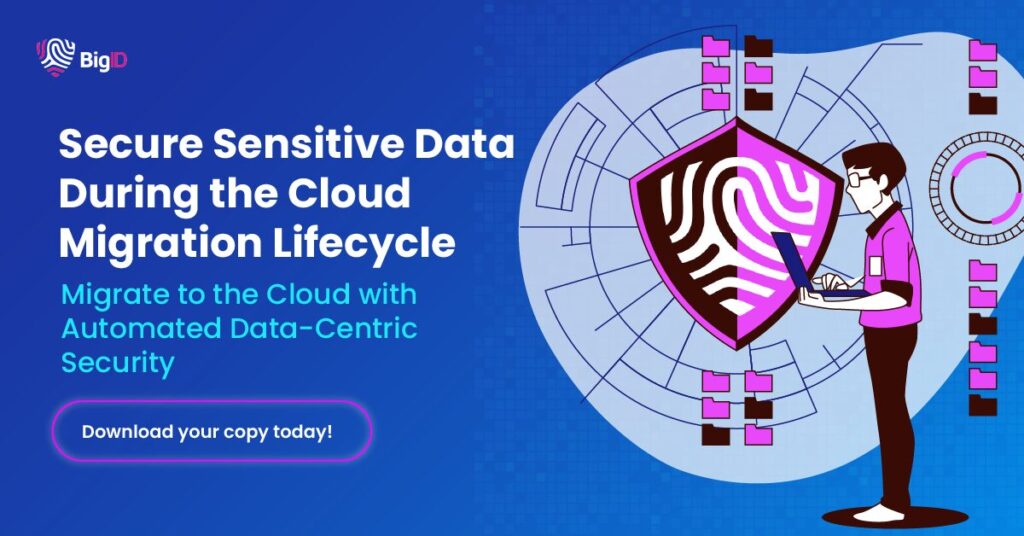Cloud migration continues to gain significant traction across various industries because of its potential for cost savings, improved efficiency, and enhanced customer experiences. With nearly 70% of organizations saying they accelerated their migration to the cloud, businesses must manage data security for cloud instances to strengthen cloud data defenses, navigate compliance requirements, and get ahead of emerging threats.
The following checklist outlines steps and considerations for organizations aiming to safeguard and streamline cloud migrations:
Assess Cloud Migration Strategy
- Identify Teams: Collaborate with data engineering, data science, IT, security, privacy, compliance, business intelligence, and business units to align on the cloud migration strategy.
- Analyze Team Structure: Determine each team member’s roles and responsibilities to identify skills gaps or resource constraints that could hinder cloud migrations.
- Review Technologies: Identify all technologies used for data storage, integration, processing, and analysis, including outdated legacy systems.
- Evaluate Data Governance & Processes: Assess current data governance practices, policies, and processes to identify data silos, duplicates, and vulnerabilities, ensuring data quality, security, privacy, and compliance.
- Align Business Goals and Requirements: Define the organization’s strategic goals and ensure the cloud migration aligns with any industry-specific or regulatory considerations that could impact the cloud migration lifecycle.
- Implement Industry Best Practices: Identify emerging trends or technologies to consider when developing a cloud migration strategy.
Map Regulatory Compliance Requirements
- Identify Data Privacy Laws & Regulations: Determine which data privacy laws and regulations impact the business based on the location of operations or customers (e.g., GDPR (EU), LGPD (Brazil), CCPA (California).
- Update Policies and Notices: Confirm that privacy notices and policies are accessible, transparent, up-to-date, and reflect data processing activities and rights.
- Align with Privacy Requirements: Understand specific privacy requirements for each global and local regulation, such as consent management, data rights, and breach response.
- Manage Cross-Border Data Transfers: Understand data transfer requirements within each jurisdiction, such as the need for data transfer agreements, adequacy decisions, or specific transfer mechanisms.

Implement a Comprehensive Data Privacy Framework
- Develop a Data Inventory: Build and maintain a data inventory with information about data sources, types, processing activities, and locations.
- Classify All Data: Implement data classification to categorize data based on sensitivity and establish proper governance.
- Develop Privacy-by-Design Principles: Adopt privacy-by-design principles in the product and service development lifecycle.
- Manage Privacy Compliance: Implement mechanisms and processes to manage sensitive data required by applicable regulations to capture consent, fulfill data rights management (access, correction, and deletion requests), and streamline breach response.
Strengthen Data Security Posture Management (DSPM)
- Assess Data Risks: Conduct continual data risk assessments (e.g does the processing involve sensitive data?)
- Control Data Access: Implement access controls to ensure that unauthorized personnel cannot access sensitive data.
- Clean-Up Data: Exercise data minimization practices to reduce the attack surface.
- Streamline Retention and Deletion: Establish data retention and deletion policies to comply with regulations in different jurisdictions.
- Respond to Incidents: Develop and maintain an incident response plan that automates detection, reporting, and mitigates data breaches, as well as notify the authorities and affected individuals.
- Protect Data: Implement robust data security measures, such as encryption, access controls, and data risk assessments, to secure data.
Monitor and Audit Compliance
- Monitor Compliance: Regularly review and update your data privacy and security processes, policies, and controls to ensure they align with evolving regulations, security frameworks, and best practices.
- Audit Compliance: Conduct internal and external audits to assess your compliance posture and identify areas for improvement.
How BigID Helps Streamline and Secure Cloud Migrations
BigID helps organizations proactively approach cloud migrations through risk management, unified security frameworks, continuous monitoring, and compliance reporting. BigID’s privacy and security-centric approach empowers organizations to execute successful cloud migrations effectively. With BigID, organizations can:
- Inventory All Data, Everywhere: Automatically discover, inventory, classify, and catalog personal and sensitive data during the cloud migration lifecycle.
- Classify and Tag Sensitive Data: Classify and tag sensitive and personal data to identify data based on policies and regulations to determine what should be migrated to the cloud.
- Minimize Duplicate Data: Identify unused, duplicate, unnecessary, or redundant data to be deleted pre- and post-migration to reduce risk.
- Enforce Data Retention: Apply retention policies with automated enforcement by data type, policy, and regulation by identifying, flagging, and deleting duplicate, redundant, and expired data.
- Secure Data During Migration: Detect, investigate, and remediate high-risk access to sensitive, personal, regulated, and at-risk data during cloud migrations.
- Streamline Breach Response: Detect and investigate data breaches, facilitate prompt incident response, and notify relevant authorities and affected consumers.
- Manage Privacy & Security Risk: Leverage access intelligence to identify overexposed sensitive, personal, and regulated data, enforce policies, and flag violations.
To learn how BigID can help your organization effectively and efficiently migrate data to the cloud — schedule a 1:1 demo today.

